Advances in technology mean intelligent machines are likely to play an increasingly important role in our future. But this raises serious ethical, philosophical and spiritual questions, says Dr John Wyatt
It was a spectacular event orchestrated by Elon Musk, the world’s richest man. Optimus, a humanoid robot, walked gingerly onto the stage, waved to the crowd and performed a few primitive dance moves, accompanied by a light show and techno music.
Musk claimed that within a few years Optimus would adopt many of the tasks currently undertaken by human hands and minds. “This means a future of abundance, a future where there is no poverty, where you can have whatever you want. It really is a fundamental transformation of civilisation.”
Stranger than (science) fiction
As Optimus illustrates, robots are increasingly leaving the realm of science fiction and entering our lives. They are constructing cars, ferrying parcels in warehouses, assisting in precision surgery and animating cute toys. Robotic devices that draw on Artificial Intelligence (AI), such as Amazon’s Alexa and Google Home, amuse our children and operate the heating and lighting systems in our houses.
There are even robotic dogs working in hazardous environments such as offshore drilling platforms. There’s little doubt that this trend will continue through the next decade, with robots becoming increasingly commonplace in many spheres of life.
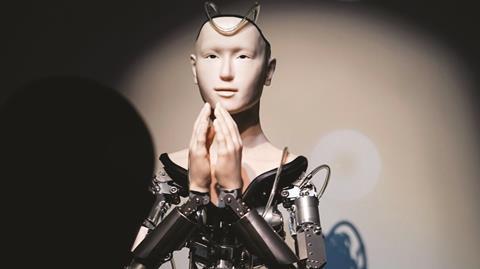
Science fiction writers since Isaac Asimov have been dreaming of a time when robots will take over the boring, repetitive drudgery of our working lives so that we can enjoy leisurely pursuits. Popular media is saturated with images of droids, bots and replicants – think of films and TV shows such as Star Wars, Blade Runner, Humans, Westworld and so on.
The robots of sci-fi pop culture range from cute and friendly through to devious, creepy and scary. But they are all conscious, sentient and purposive – they all have an inner world and self-awareness. But, as the dystopic side of science fiction has taught us, what the robots are secretly planning might not be in humanity’s best interests.
children who grow up with robots will understand them in fundamentally different ways
It was not surprising, therefore, that at the Optimus launch event in September, Musk cautioned his audience about the dangers of robots turning against humanity. Every Optimus would be fitted with a stop button that cannot be tampered with, he said. “We always want to be careful we don’t go down The Terminator path.”
Childlike bots
From 2004’s I, Robot to Avengers: Age of Ultron, science fiction has been obsessed by the possibility that the sophisticated and powerful machines we create to be our docile servants might turn the tables. And whether we like it or not, all our interactions with real-world robots – now and into the future – will be influenced by sci-fi culture.
This can be deeply problematic because of our inbuilt tendency to anthropomorphism – projecting human characteristics onto inanimate objects. Even though people know that current robot technology is not as advanced as in the films, there is a tendency to suspend disbelief when the machine looks and behaves like us. We can’t help seeing our own humanity reflected back at us.
Some years ago, I attended a conference to discuss the ethical and spiritual implications of advancing AI and robotic technology. As I toured the university computer science department with a group of senior church leaders and theologians, we entered a laboratory in which a group of small childlike robots were operating.
Their eyes were flashing, arms were moving, speech processors generating sound – and instantly the atmosphere in the room changed. People were laughing, smiling and interacting. A senior bishop (no less) got down on his hands and knees to engage with the robots face to face.
However much we tell ourselves that these are just mechanical devices, we find ourselves drawn into emotional attachment. Unsurprisingly, robot developers and manufacturers expend considerable efforts on increasing emotional engagement with their creations.
They focus on creating cute and friendly animal or childlike beings that generate a powerful response. As tech ethicist David Polgar put it: “Human compassion can be gamed. It is the ultimate psychological hack; a glitch in human response that can be exploited in an attempt to make a sticky product. That’s why designers give AIs human characteristics in the first place: they want us to like them.”
Robot rights
Kate Darling, a researcher at the Massachusetts Institute of Technology Media Lab, has performed studies in which groups of volunteers were given small robotic dinosaurs to interact with. The volunteers were then asked to tie up, strike and ‘kill’ their robots. Darling reported that many of the participants refused to ‘hurt’ the robots, and expressed a sense of discomfort when they ‘whimpered’ while being smashed.
Darling uses this kind of evidence to argue that it may be necessary in the future to develop some form of ‘robot rights’ or legal protections: “Violent behaviour toward robotic objects feels wrong to many of us, even if we know that the abused object does not experience anything,” she says.
Studies of children who grow up interacting and playing with robotic pets have shown that while they are well aware that the robots are not alive, they understand them as being ‘alive enough’ to be a companion or a friend.
Like the adults in Darling’s study, it seems many children develop a new category – or new way of thinking – about their robotic toys. On the one hand, the pets are not fully alive, but on the other, they are not dead. As one group of researchers wrote: “It may well be that a generational shift occurs wherein those children who grow up knowing and interacting with life-like robots will understand them in fundamentally different ways from previous generations.”
It is hard to know what effect this will have on emotional development. As psychologist Sherry Turkle put it: “Ultimately, the question is not whether children will love their robotic pets more than their animal pets, but rather, what loving will come to mean?” In other words, how might human relationships become distorted in the future if children increasingly learn about the meaning of love and intimacy from their interactions with machines?
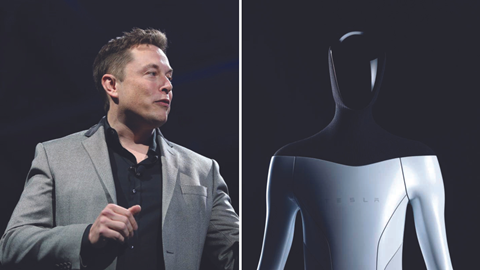
Optimus and Elon
Optimus, first demonstrated to the public by Elon Musk in September 2022, is a life-sized humanoid robot designed and constructed by Tesla, the same company that produces electric cars – hence its moniker, the ‘Tesla Bot’. Musk aims to release millions of humanoid robots as rapidly as possible. With sophisticated articulating hands, the Optimus has been designed to “operate tools and do useful things”, as Musk put it, including working in Tesla factories and caring for elderly people. Mass production of what Musk describes as the “extremely capable robot” would enable the company to charge around $20,000 per product, much less than the cost of a Tesla car.
Manmade machines
For many of us, there is a special fascination with humanoid robots; replicants that seem indistinguishable from living, breathing humans. Professor Hiroshi Ishiguro, a roboticist at Osaka University, Japan, has created a robot that is an identical human-sized copy of himself. It replicates his appearance, movements and speech with uncanny precision. He has even used the robot to give lectures to students in his place. When questioned about his intentions, he said: “I have created this robot in order to understand what it means to be human.”
When we interact with a machine constructed out of wires, joints and motors, but which mirrors our own humanity, it can be a disorientating experience. There is often a sense of something creepy or uncanny about a robot that is nearly human but not quite. And I wonder whether that uneasy feeling is telling us something rather disturbing about ourselves. Is there a sense in which we, too, are simply biological machines made of flesh, nerves and muscles, rather than wires and motors?
There is no substitute for human empathy, solidarity, friendship and love
Is there really so much difference between ‘a machine made out of meat’ and one made out of silicon? Physicist Sean Carroll expressed a view that many modern technologists would concur with: “When asked for my thoughts about machines that think, I can’t help but reply: ‘Hey, those are my friends you’re talking about.’ We are all machines that think, and the distinction between different types of machines is eroding.”
Of course, there is a certain truth behind all this. There are indeed aspects of the way that we function as humans that are similar to the robots and computers we have designed and created. The functioning of the human brain does have some similarities with the way a computer works, and academic research in psychology and neuroscience has provided fruitful insights. But to say that a human is a machine is nonsense.
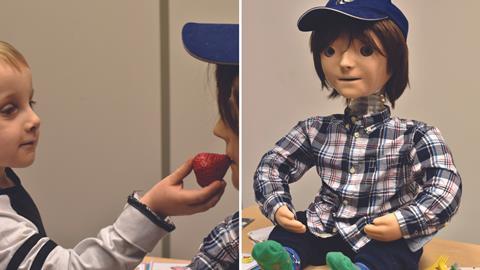
Kaspar the friendly bot
Kaspar is a friendly, childlike robot developed at the University of Hertfordshire to help children with autistic spectrum disorder. Research has demonstrated that therapeutic robots such as Kaspar can act as a safe and predictable learning tool for children who struggle in social contexts. Structured play sessions with the robot help children learn social interaction and communication skills, such as the importance of eye contact and taking turns. But there is a difference between using robots for specific therapeutic purposes and having them continuously available to play the role of human companions and friends.
Imago Dei
The Christian faith teaches that each one of us is a person created as a unique reflection and physical representation of the invisible God. We are known, loved and even named from before the foundation of the world.
We are called into existence and formed in our mother’s womb; woven into a network of human relationships – friends and lovers – and called into intimate communion with our creator. We are given the dignity of freedom and are accountable for our choices and actions.
We are also offered the opportunity to be a temple of the Holy Spirit, destined ultimately to participate in the consummation of all things in the new creation. To be created as a human person is, in some mysterious and wonderful way, to be written into the great story of history, each one of us a bit-player in the great drama of the ages.
From this perspective, to compare a human person to a robot designed by human engineers seems a rather pathetic and forlorn exercise. I can’t help thinking of the words of the Old Testament prophet Isaiah, who lampooned the stupidity of the idol -makers of his day:
“He burns part of the tree to roast his meat and to keep himself warm.
He says, ‘Ah, that fire feels good.’
Then he takes what’s left
and makes his god: a carved idol!
He falls down in front of it,
worshiping and praying to it.
‘Rescue me!’ he says.
‘You are my god!’”
(Isaiah 44:16-17, NLT)
It’s clear that human-machine relationships raise complex ethical, social and philosophical issues, and there are no easy answers as we look towards a future in which intelligent machines will play an increasingly important role. As we find the distinction between science fiction and our reality starting to erode, there is a fresh opportunity to reflect more deeply on our own humanity.
Christians have a special calling to safeguard and celebrate the wonder of what it means to be human
Although Musk’s dreams of an age of abundance seem overplayed, there’s little doubt that there will be definite economic and practical benefits from advancing robotic technology. But it seems to me that as Christian believers, we have a special calling to safeguard and celebrate the uniqueness and wonder of what it means to be human. In particular, to celebrate and uphold the importance of embodied face-to-face, human-to-human relationships.
There is no substitute for the human empathy, solidarity, friendship and love expressed in the human eyes that gaze at us, the human arms that care for us and the compassionate, thoughtful, loving words spoken by the human mouths of those around us. For all the brilliance of the engineering, you can’t help feeling that the Optimus robot is a long way off from the real thing.
Watch Dr John Wyatt discuss robots, transhumanism and life beyond earth at thebigconversation.show







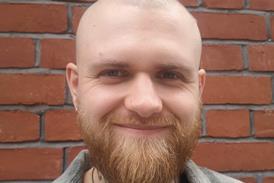






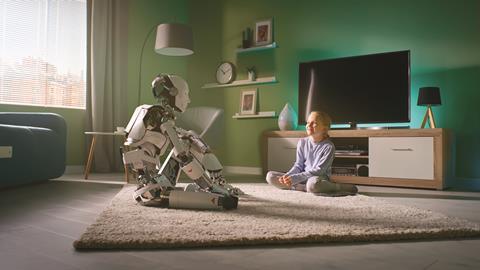
























2 Readers' comments